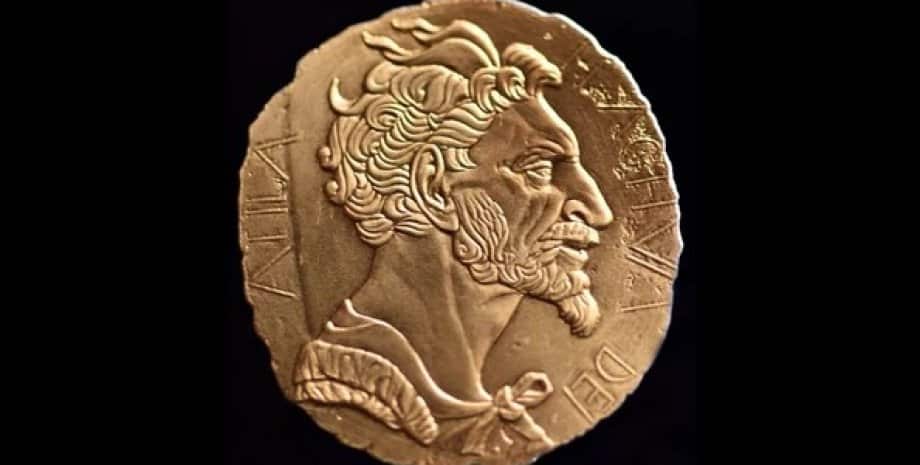The famous ancient military leader died at the age of 58 on his wedding night, after marrying his new wife.
The leader of the ancient tribe of the Huns, Attila, terrified the inhabitants of both the Western and Eastern Roman Empire in the 5th century AD. The Huns constantly invaded the territory of both ancient states and devastated their settlements. But scientists are still arguing whether Attila died naturally or was killed by his new wife, and most importantly: where is his tomb? Several scientists expressed their assumptions in an article for Live Science.
Under the leadership of Attila, the Huns reached their highest peak. They were able to subjugate many different tribes and, as a result, create a state entity that stretched from the Rhine River in the west to the Volga River in the east. Attila was a constant threat to the capitals of two empires – Rome and Constantinople, but he never sacked either of these cities. The Romans called Attila Flagellum Dei or “the scourge of God”. He forced the emperors of the Western and Eastern Roman Empires to pay him huge tribute in exchange for peace, which, as a rule, did not last long.
Under the leadership of Attila, the Huns reached their highest peak. They were able to subjugate many different tribes and, as a result, create a state formation that was wiped from the Rhine River in the West to the Volga River in the East.
According to historical sources, Attila was born in 395 and ruled over the Huns from 434 until his death in 453. It is known that he died on his wedding night, after marrying his new wife named Ildiko. But scientists are not completely sure whether it was a natural death or whether the leader of the Huns was killed by his “beloved” wife.
In any case, Attila died at the age of 58, but his tomb, or just a grave, has never been found. And scientists are still speculating where it might be. Indeed, much more historical data has been preserved about military campaigns than about the place of his burial.
“The only surviving written source that mentions the funeral of Attila is the work of the Gothic historian Jordanes, who lived in the 6th century AD. This historical work is called “On the origin and deeds of the Getae” or simply “Getica”. In this book, Jordanes wrote that Attila was buried in a triple coffin.The first, in which the body lay, was made of gold, the second was made of silver, and the outer coffin was made of iron.According to Jordanes, precious metals were a symbol of the wealth that their leader acquired for the Huns, and iron symbolized the military power of this ancient tribe,” says Zsofia Masek from the Hungarian Academy of Sciences.
According to the records that Jordan left, all the people who built the tomb for Attila were killed. This was done so that no one would know about the place of his burial. According to the book of the Gothic historian, Attila was buried along with various jewels and jewelry, as well as weapons.
Scientists believe that the exact location of the tomb of the leader of the Huns is very difficult to find. And even if this happens, and this tomb is found, there is no certainty that it has not been looted and destroyed for a long time.
“I assume that he could have been buried somewhere on the territory of the Great Hungarian Lowland (this plain occupies almost half of the territory of modern Hungary and is also called Alfeld – ed.). Somewhere here, Attila, in modern terms, had her own headquarters. And perhaps the tomb of the leader of the Huns is located next to this place, it seems to me that we need to look for this place near the river. Perhaps this tomb survived, unless of course it was looted hundreds of years ago, “says Laszlo Vespremi from the Catholic University of . Pazmani Peter in Budapest, Hungary.
According to the scientist, many people have been trying to find the burial place of Attila since the 13th century. But this place was searched mainly near the ruins of ancient Roman settlements. But no one ever found anything.
Žofia Masek also supports the idea that Attila’s tomb should be looked for in the Great Hungarian Plain. But perhaps this grave is located on the territory of modern Serbia or Romania, where there are also parts of this lowland, the scientist believes.
“There is a possibility that the tomb of Attila has already been found. It’s just that this burial was not connected with the leader of the Huns in any way. human remains were found and it is still not clear who these items were intended for,” says Valeria Kulchar from the University of Szeged, Hungary.
According to Masek, it is possible that Attila’s grave will never be found, and this will forever remain a mystery.
Photo: Live Science | The famous ancient military leader died at the age of 58 on his wedding night, after marrying his new wife.














